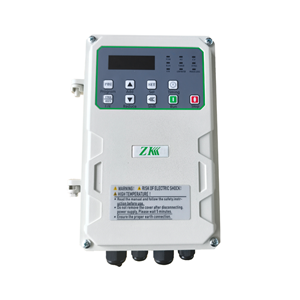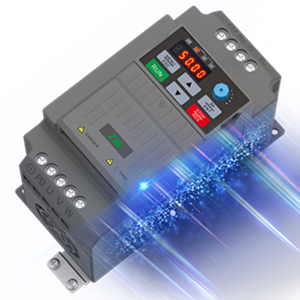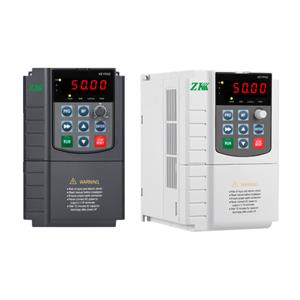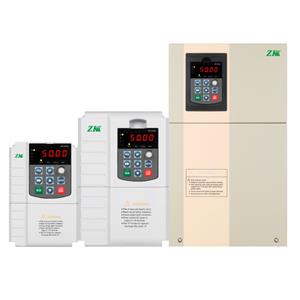The EMC protection design and application of VFDs
Electromagnetic Compatibility is a crucial aspect to consider in the design and application of frequency inverters. Also known as variable frequency drives, these frequency inverters are widely used to control the speed and torque of electric motors by varying the frequency and voltage supplied to them. However, the operation of frequency inverters can generate electromagnetic interference, which can affect the performance of nearby electronic equipment and systems. Therefore, implementing effective Electromagnetic Compatibility protection measures is vital to ensure the reliable and safe operation of frequency inverters.
A key component of Electromagnetic Compatibility protection design is the selection and application of appropriate electromagnetic compatibility filters. Electromagnetic compatibility filters are used to attenuate undesirable frequencies and reduce the level of electromagnetic interference emitted by the frequency inverters. Two main types of electromagnetic compatibility filters are commonly used: input-side electromagnetic compatibility filters and output-side electromagnetic compatibility filters. Input-side electromagnetic compatibility filters are installed on the input side of the frequency inverters, while output-side electromagnetic compatibility filters are placed on the output side. These electromagnetic compatibility filters help to mitigate conducted electromagnetic emissions and prevent high-frequency noise from propagating through the power lines. Additionally, proper filtering can also protect frequency inverters from external sources of electromagnetic interference, such as transient overvoltages and radio-frequency interference.
Electromagnetic shielding is another important strategy in Electromagnetic Compatibility protection design for frequency inverters. Electromagnetic shielding involves the use of conductive materials to enclose sensitive components and cables, thereby preventing the ingress or egress of electromagnetic fields. For frequency inverters, effective electromagnetic shielding can be achieved by using shielded power cables for motor connections and grounding the shields at both ends. This helps to minimize radiated electromagnetic emissions and protect against radiated electromagnetic susceptibility. The enclosure of frequency inverters itself should also be designed with Electromagnetic Compatibility considerations in mind, including the use of conductive gaskets and proper bonding of metal parts to create a continuous and effective shield.
Electrical grounding and equipotential bonding are fundamental practices that play a critical role in Electromagnetic Compatibility protection. Electrical grounding provides a reference potential for the equipment and ensures safety by dissipating fault currents. Proper electrical grounding of frequency inverters, motor, and associated components is necessary to prevent ground loops and minimize electromagnetic interference. Equipotential bonding refers to the connection of various metal parts to create a low-impedance path for electromagnetic currents. Effective equipotential bonding eliminates potential differences between conductive parts, reducing the likelihood of radiated electromagnetic emissions and interference.
Additionally, proper equipment layout and cable routing can significantly enhance Electromagnetic Compatibility performance. Power cables, control cables, and signal cables should be segregated to prevent cross-talk and reduce the risk of coupling electromagnetic interference. Routing cables along different paths and using physical barriers can further mitigate interference. Placing sensitive components, such as control circuits and sensors, away from high-power devices helps to avoid direct exposure to electromagnetic fields generated by frequency inverters.
Compliance with Electromagnetic Compatibility standards and regulations is essential to ensure the reliability and safety of frequency inverters in real-world applications. Electromagnetic Compatibility standards and regulations such as IEC 61800-3 and EN 55011 specify the limits for conducted electromagnetic emissions and radiated electromagnetic emissions, as well as electromagnetic immunity requirements for frequency inverters. Adhering to these Electromagnetic Compatibility standards and regulations not only ensures regulatory compliance but also enhances the quality and performance of frequency inverters systems. Testing and verification of Electromagnetic Compatibility performance, conducted in accordance with these Electromagnetic Compatibility standards and regulations, are crucial steps in the development and deployment of frequency inverters.
In conclusion, the design and application of Electromagnetic Compatibility protection in frequency inverters are multifaceted and require an integrated approach. By employing effective electromagnetic compatibility filtering, electromagnetic shielding, electrical grounding, equipotential bonding, and equipment layout practices, the electromagnetic interference generated by frequency inverters can be minimized. Compliance with Electromagnetic Compatibility standards and regulations further ensures the robustness and reliability of frequency inverters systems. As the use of frequency inverters continues to expand in various industrial sectors, the importance of Electromagnetic Compatibility protection cannot be overstated. Ensuring that frequency inverters operate without causing or being affected by electromagnetic interference is fundamental to achieving optimal performance and safety in modern electrical systems.




